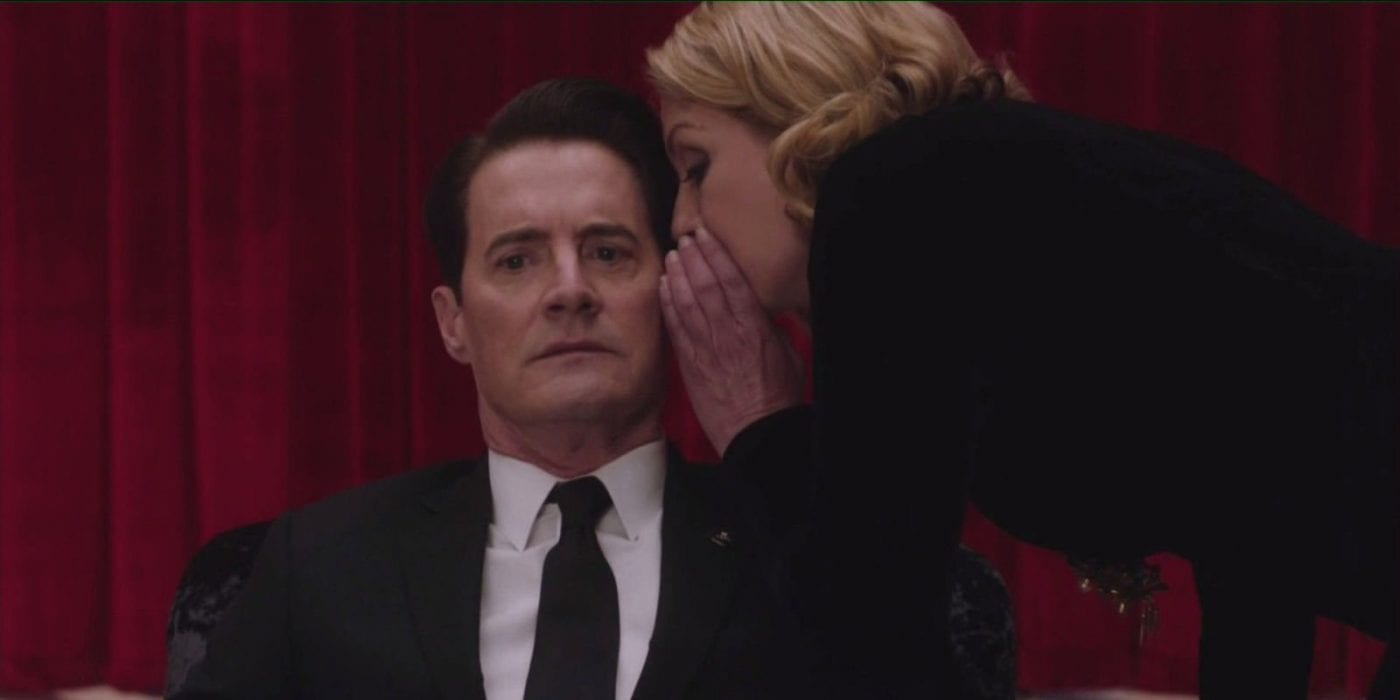Memories in Structures
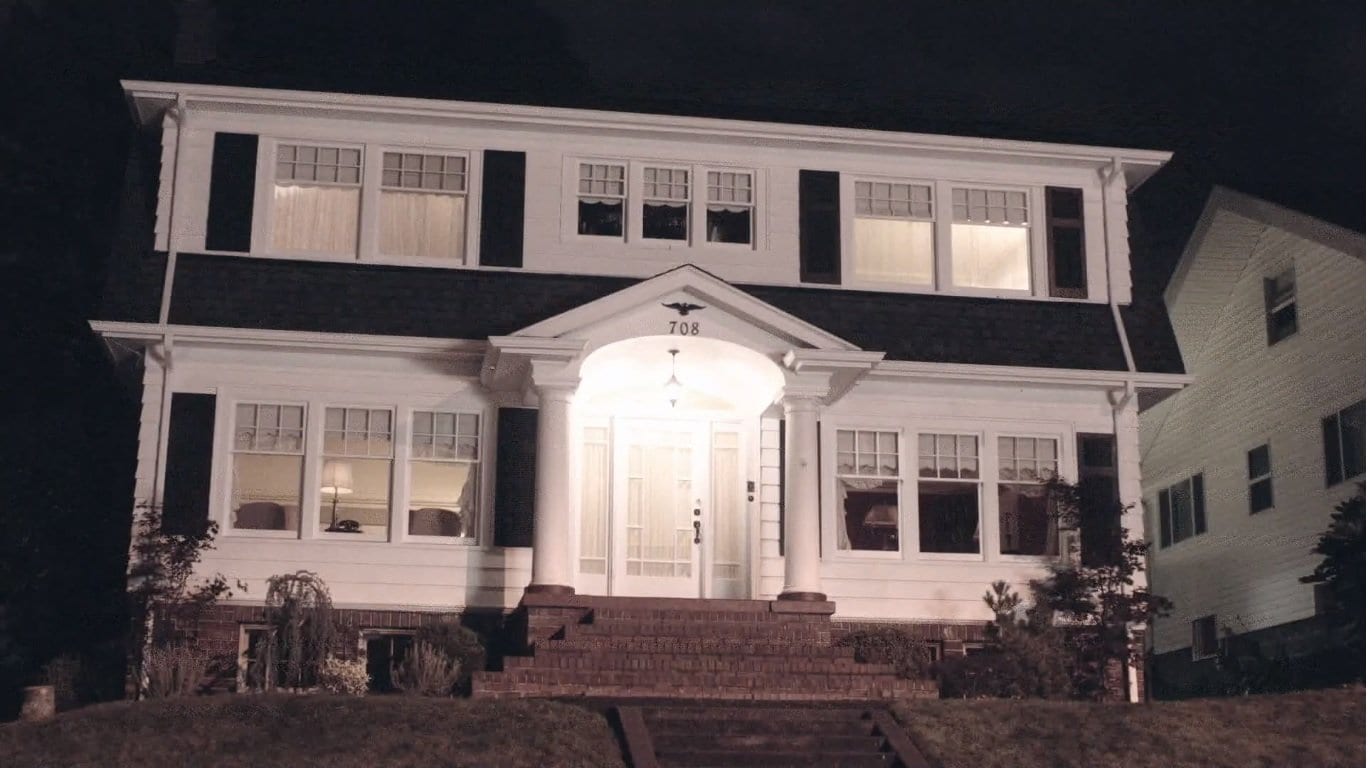
In our world, most of the ghosts you hear about reside in haunted houses. The walls remember things and their absorbed memories replay like scenes in a film. Memories are thoughts that hold power (and in David Lynch’s work are power) and seem to attach to physical states. Buildings absorb the strongest or most repeated motions within it. Haunted houses will play the memory of footsteps walking down the hallway then going up non-existent stairs every night around 11:30pm. The house will replay cold drafts when a window is used to opening, whether it is open or not. And sometimes the house even remembers people themselves, such as the Bookhouse in St Louis. Its original location remembered the spirit of a little girl, who would sometimes help people find specific books they were looking for, but it also remembered a mean elderly man who would make the book store’s patrons feel severely unwelcome. You knew his presence was there when you could feel the negative energy and smell the pipe smoke. Building walls remember things. Even the ground can remember buildings, if The Final Dossier is correct about the Dutchman’s origin as a real hotel burned down by arson in the late 1960s.
Memories in Bodies
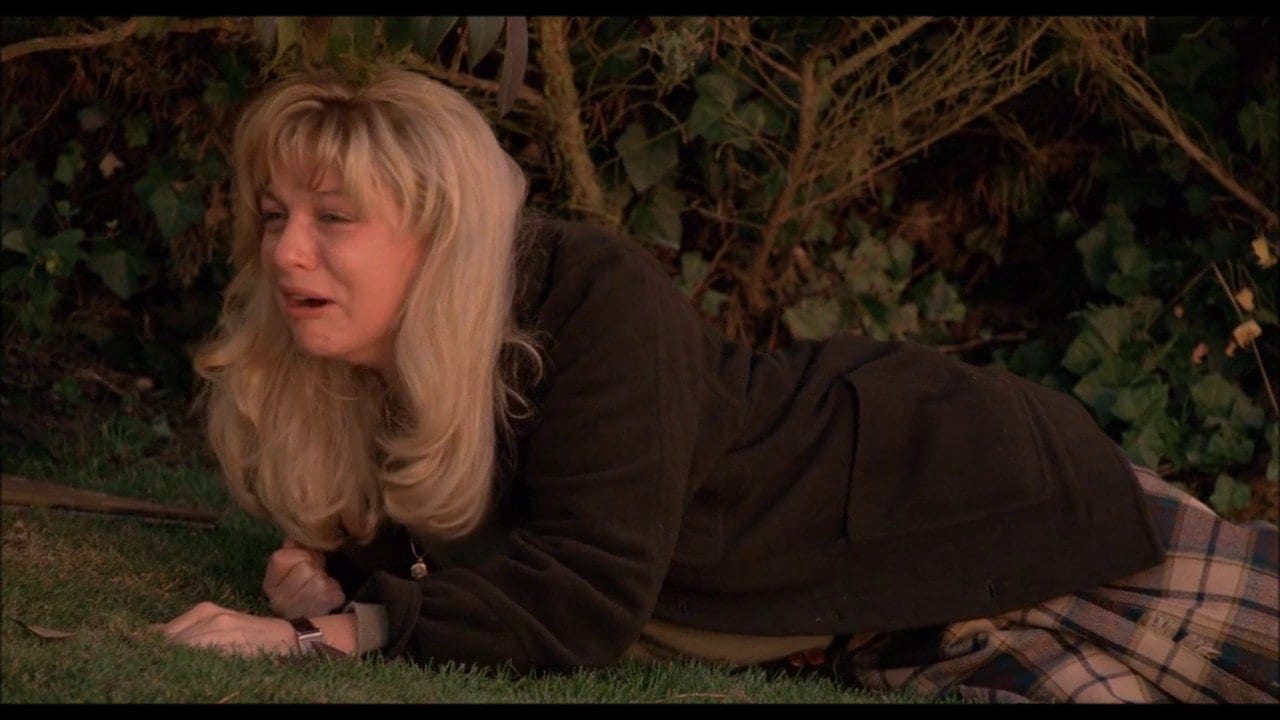
Bodies remember things. Muscle memory is a survival necessity. The body remembers what it needs to so that it is prepared to the best of its ability not to die. If you’re in a body, you’ll remember what the body remembers.
Memories in our own heads work the same way as they do in haunted houses, though expressed internally. After you have an argument with someone, tell me you don’t replay it in your head based on what you wished you’d said. Tell me you don’t imagine how you would’ve changed things for the better if only you’d just said this. Right after you do something massively embarrassing, go on a job interview, or ask someone out on a date, tell me you wouldn’t loop the interaction in your mind with all the possible things you could have made better or worse? Or if things went well, try to tell me you don’t relive that in your head over and over in triumph? These memories rework themselves in your head as you play out what-ifs. These thoughts are cyclical, beginning over and over from the same point in a very Groundhog Day way. These replayed events are memories that are as important to you as the events themselves, because they are all that’s left to you that your experience existed. There is nothing supernatural about second guessing yourself or celebrating victorious moments. They’ve left an impression on you.
As human beings, we relive our most impressionable moments in order to learn from them. Sometimes events are so bad (say being held up by a person with a gun, or taking shelter from a tornado) that events replay over and over in your mind because you want to discover how you survived it in case it happens again. And in terms of events so terrible, such as what soldiers like Mickey’s friend Linda lived through, you may ask yourself why you survived. Sometimes sights and sounds can trigger memories so strongly, in terms of PTSD, that you feel like you’re there again. In every way but physically, you are there again. These memories are just as much ghosts that can haunt the world as the ghosts that haunt houses. Trauma is serious, and real.
Memories in Dreams
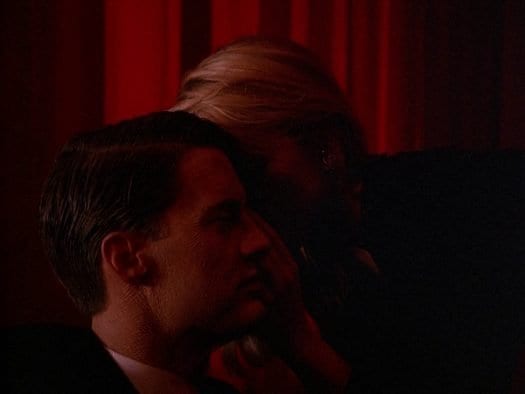
Dreams are an interesting state because we don’t typically remember much from dreams. We have trouble it seems because our soul is not the part of us that remembers. Our bodies retain the memories because the memories are tied directly into survival instinct. Meanwhile, the soul is in a perpetual state of Be. Memories in dreams are usually left in the dream.
If you’re in an astral state, which per Theosophy says can happen through meditation but most normal folks only achieve when asleep, you leave your physical presence for a higher astral plane, and this is the state of dreaming. When in a dream, a soul can plant the memories of its experience inside the structure of the dream (think of its physicality being more like a cloud than the images you’re dreaming about) but it’s hard to remember moments from that state when you’re awake. Hence Gordon Cole needing a Monica Bellucci Dream to come to him before he could remember the Jeffries moment in Philadelphia. Cole needed a cue-dependent dream memory to bring him back to the original memory.
Being essentially made from an electrical dream state, Lodges don’t absorb the memories of the soul’s experience. If you have an experience in a dream, you can only remember all the details when something jogs your memory and brings you back to the moment you’re specifically trying to pinpoint, say when Cooper couldn’t remember what Laura whispers to him until the elderly room service waiter mentions the gum in the Roadhouse and Leland takes the bait and reminded Dale into the answer that is suddenly within his reach. Interacting with Lodges leaves memories in the Lodge and removes them from being remembered in your body. The memory has been absorbed in the place rather than yourself. And the sequence of Lodge events are sometimes born into something new. The memory perhaps isn’t yours to have, or maybe it’s all cue dependency and you can only recall a memory when you’re surrounded by like memories.
When you’re in a dream in Twin Peaks, it appears you are tapped into a flowing stream of energy, which I’ll call electricity because of the prevalent imagery throughout the season, and not to mention the bullhorns of similarities between Season 3 and Lynch’s unproduced Ronnie Rocket screenplay. In the screenplay, a detective is trying to enter a second dimension, which is essentially akin to Lodge-space as far as I can gather, and Ronnie Rocket is a three-foot tall man who has control over electricity. It’s not one-for-one with Season Three mythology, but there is enough prototypical concepts to this season as there is from Blue Velvet into Season 1. And there is one particular moment that you know must mean something in that screenplay, but in Season 3 becomes a major clue: the bad guys have to kill Ronnie inside the city because otherwise he might come back as a memory. In the physical city, he’ll die in his body and people will remember him in their hearts. But if he dies a traumatic death in the second dimension, becoming a memory means something much more.
The strongest events, like Ronnie Rocket implies, appear to manifest in Lodge-space into a physicality of their own not unlike ghosts. They form into things like tulpas. And if you die, and are sent to the Lodge, you almost assuredly become a memory.
Tulpa: Personified Trauma

In the Season 3 Blu Ray bonus material, Lodge Laura is introduced as Carrie Page. If it’s not Laura herself as we’d all previously assumed, what does that mean? She’s a tulpa, like Diane. The removable face was a tip off. Another interesting clue about Carrie: “I am dead, yet I live.” This tells me she is a traumatic memory with literally a life all her own. I believe the memory of Laura’s trauma from her abuse and death was delivered into the Lodge upon her death by way of the Owl Cave ring, and it grew bodily into Carrie Page.
Laura Palmer died in Fire Walk With Me after putting on the Owl Cave Ring, and appears to have entered the Lodge directly because of that. We know from Ray Monroe that (an astral form of some kind shaped like the wearer that I’m calling) a soul appears in the Lodge while the body remains on Earth. Whether it’s Ray’s soul we saw or another trauma tulpa is up for grabs, but I’ll say it’s his soul based on Laura’s angel appearing in Fire Walk With Me.
When Laura died in the Lodge, she was rescued by an angel. End of her story, right? Well how did she stay in the Lodge? Carrie Page was created and left behind when Laura ascended with the angel. Laura’s trauma was so strong and so attached to the world it was pulled away from Laura when she went to a higher plane. But because Laura’s trauma was so strong it became an entity all its own, and later on I will propose Carrie needs to shovel out of the sh*t in order to allow all of Laura to move on. But that’s later.
Right now, I’m going to suggest another tulpa was created in similar way: Diane Evans. We know for 100 percent the early Season 3 Diane was a tulpa that maintained Diane’s memories. I think she met her end when DoppelCooper and BOB raped her. When she was brought to the Convenience Store, I believe she was killed, just as Laura was killed upon her entrance to the Lodge. Diane’s trauma over the betrayal became the Diane we first met in Season 3. And she fully realized her trauma right before she was pulled back into the Lodge and she recognized she was a tulpa. Behind her face was darkness rather than the electricity within Carrie, but there’s reason for that which I’ll get back to later. Right now I have another trauma-based tulpa to try to explain.
Sarah Palmer is also a tulpa as far as we can understand. She removes her face and is hollow inside. Of all people, she easily has the trauma necessary to become a tulpa. When haunted by as much PTSD as she was, it’s easy to understand how she could have died inside, leaving room for any old spirit inside her to move in like her body was an abandoned ghost town (and ghost towns are a thing: In Secret History of Twin Peaks, Mark Frost specifically spoke about Hanford, Washington making ghost towns of its surounding towns, and in a Reddit AMA he mentioned how the three-year-old ghost towns in Las Vegas where CooperDougie appeared was something he wanted to include in Season 3, so ghost towns are baked in to the Season 3 script regardless of Lynch’s interest in carrying out the metaphor). In a previous article I explained Sarah’s mindset as I tried to humanize her situation. When Sarah Palmer gave up the fight and was swallowed by the darkness around her, it made it easy for her trauma become a living ghost, a zombie even, and it made it easy for the Frog-bug inside her to assert control.
Except Sarah is physically on Earth so how can these Lodge-style metaphors happen literally?
The Weakened Barrier Between Two Worlds
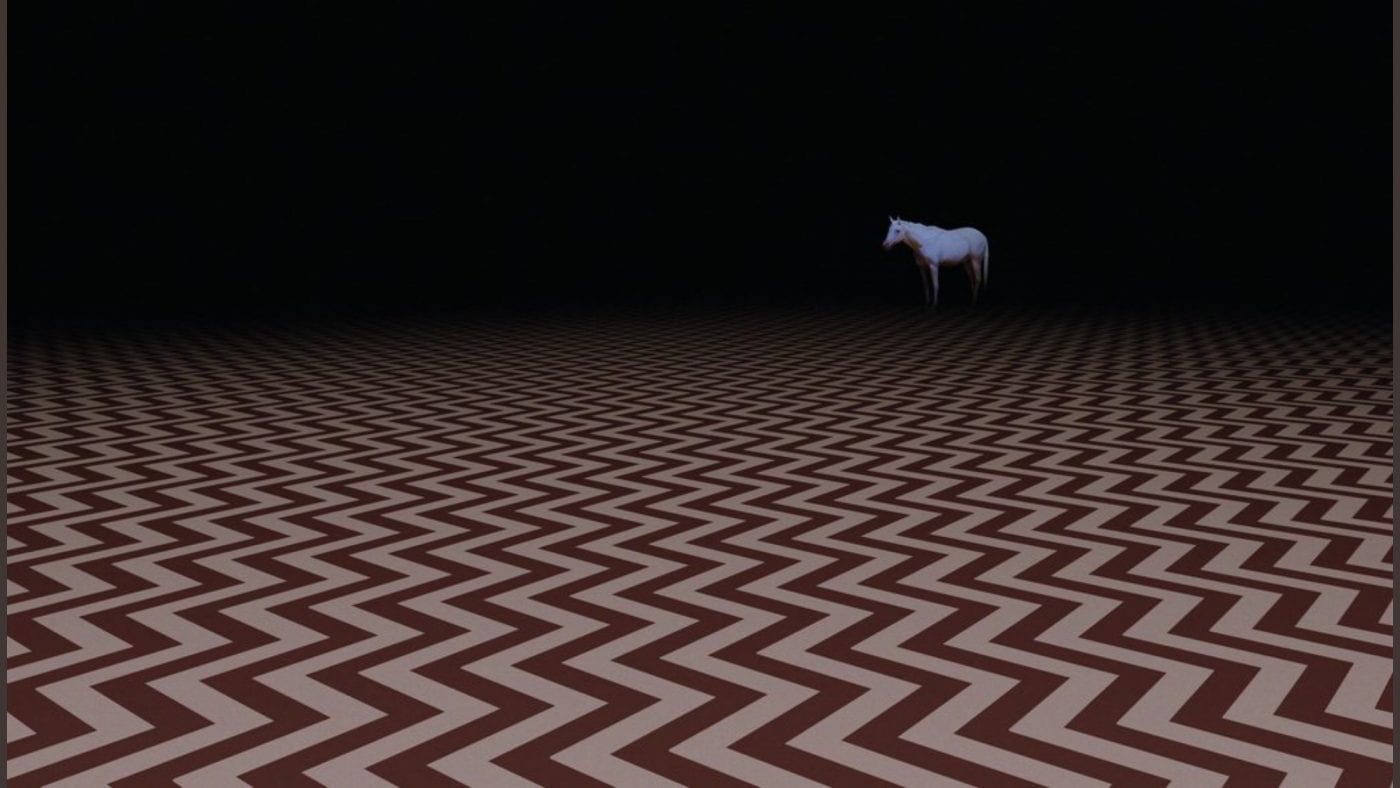
In Twin Peaks Season 3, we see signs in the physical world both of dreamlike forgetfulness and inability to remember, and also physical manifestation of mental loops, and tulpas living among us.
In a previous article I credited this to my timequake theory mechanics, where interactions between Lodge and reality scrape across each other and send shock-waves through time and reality like earthquake aftershocks, and further extrapolated how some shock-waves can shake the proverbial tectonic plates so much that the realities slip across each other and form metaphorical mountains of reality that contains both Lodge and physical realities at once. In this column I’m crediting these kind of layered reality “mountains” to any territory surrounding portals. Because the barriers between our dimension and the second dimension has become weak ever since humans blew an irreversible hole in the barrier with the atomic bomb and Experiment sent Frog-bug eggs through the hole.
And because of this melding of astral and physical states, memory itself isn’t what it used to be.
We get clues of this in Season 3 with all the meta names and moments. Mary Reber playing the current owner of the Palmer house and we all know she’s actually the owner. Eddie Vedder playing a musician that is his given birth name rather than his stage name. Catherine Coulson dying and the Log Lady doing the same, as well as both Margaret and Catherine getting an “in remembrance of” in the episode credits. All of these things make us feel the mingling of two completely different kinds of realities smashed together seamlessly and awkwardly in difficult-to-define ways. It instinctively makes us recognize the blend as well as makes us try to understand what is off. But it’s not one reality or the other. It’s both. They commingle. They influence the other. And the scenes we see show the stress this relationship is causing.
In a translation between reality states, Lodge entities speak backwards while physically-based characters (say, Cooper) speak forwards. In Season 3, we see backwards blinking and repeated motions such as the Las Vegas FBI Regional Bureau Chief hitting his desk not just once but multiple times. On a different tack, we also hear an evocative hum in the Great Northern (and the Jones home and hospital in Vegas) where there are soft spots between realities that Gerard can push through.
Experience on Earth, when within range of portals, becomes as malleable as reality within dreams. The experience of the observer becomes as much a part of reality as what physical reality dictates.
When Sarah Palmer emotionally died inside, she literally died, and because her house has a portal in a ceiling fan as well as a portal in a painting to the Dutchman’s hallway, her house is an in-between liminal space. Her emotional death in this place allowed her body to die, and yet live on as a tulpa. And because she’s still alive, her Frog-bug was allowed to live on inside it same as ever, except with the added ability to mature within it.

In a similar vein to Sarah’s trauma, the people in Twin Peaks who are overwhelmed by grief don’t do so well. In particular, I’m thinking about the horn-honking woman with the zombie child in the passenger seat. Not only does her “aaaaaaaah!” loop over and over cyclically, the worst case scenario representation of the woman’s (possibly dead) child is riding next to her. This is a form of PTSD presented to us to show that the effects of Lodge influence is happening to everyone within the limits of the portals and the nested realities. The screaming woman’s memories and fears are brought literally to life.
To a lesser degree, we see loops of belief as Lucy lives in the past by understanding only old technology (except when she’s shopping on the Internet which is motivated by love for Andy rather than fear of the unknown), and Big Ed and Norma staying in their holding patterns as Ed paternally holds himself responsible for Nadine’s safety and Norma puts her growth into her business rather than herself.
In the immediate vicinity of portals, time itself skips. It’s like the multiple law enforcement officers at Jack Rabbit’s Palace and the Woodsmen outside the Convenience Store in Part 8. Time stutters back and forth and outright skips at random intervals like a needle at the end of a record. This is the exact same thing that happens just inside the portal too in Part 3 in the room with American Girl. Points of nexus behave as if unstable, which I believe they are.
At the crux of a nexus point is Audrey Horne. She’s literally caught between worlds more than anyone else because DoppelCooper did not bring her to the Lodge to put her in a Lodge-adjacent space. She was already there, in a coma when DoppelCooper and BOB raped her in the hospital. She never let her trauma turn her into a tulpa because she remained herself (as Audrey always does), nor was she meant to be a tulpa before the last minute course-correct of Audrey’s character during Season 3’s filming. Audrey’s tulpa does not haunt a physical space, Audrey’s life bodily haunts Lodge-adjacent space. How do we know she’s caught between worlds? The exact dialogue between her and Charlie as she loops about needing to go to the Roadhouse. Then there’s her break from the Roadhouse when she gets there, where she dances to the song titled after her. Not only does she jump to another location as she mentally has a breakthrough, the music plays backwards from there. Her POV went strictly into the physical world and the Roadhouse began sounding like it’s from the Lodge playing backwards. Why is Audrey so attuned to this where it’s vague with everyone else? Because she’s also a portal: when she gave birth to Richard Horne, her own body became a Lodge portal.
With that exact logic in play, we can say for certain that this can also apply to Sarah Palmer. As a portal herself, this allows for Sarah Palmer to be a living Jumping Man or Owl Cave Ring (both symbols in their way of travel between worlds) and yet another reason why Sarah and her house are so particularly Lodge-like despite being part of the physical world.
And also we get a glimpse of what it looks like when you fight for yourself, as Audrey does, and when you give up, like Sarah.
Black Lodge from boom to bust
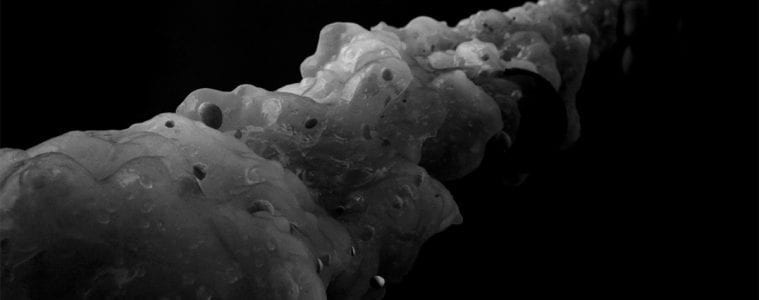
Based on Sarah and Audrey’s explicit connections to the Black Lodge, and the way negativity seems to have invaded the whole world, I can say with reasonable accuracy that the Black Lodge is the portion of the higher reality that is invading the physical world.
Its out-of-control appetite has dominated characters like Steven, who became addicted to Sparkle and acted spiritually-starved and hungry beyond his ability to handle it. And when he shot himself he apparently went missing rather than became a physical body as if that hunger consumed him outright. All the Roadhouse soap opera characters looked to drugs etc. to alter their reality because they couldn’t handle it either. Their pain and wanting rose to the surface, their appetite and impulses on full display to their own detriment.
It started with the bomb, and the Experiment’s eggs. The Experiment, if anything, is the Lodge personified, an experiment of physical shape. I will make a wide assumption here that it is what we mistake for Judy, but not being convinced this is exactly the case.
Judy, I think, is a red herring created or embellished on by Phillip Jeffries and the Fireman (and possibly Briggs) to be a distraction for DoppelCooper to focus on, but I’ll get back to that later.
The incursion of the Black Lodge into our reality came to a head with the death of Laura Palmer. In 1989, the Lodge had been expanding but was still satisfied by its appetite thanks to a theory I’m cribbing from EW’s A Twin Peaks Podcast where Jeff “Doc” Jensen and Darren Franich suppose BOB was a force going out into the world and gathering garmonbozia, which is essentially the sustenance the Lodge needs to survive. With BOB collecting the garmonbozia and sending it back (with the invoices he signs with little letters clipped from newspapers and posted under fingernails of the garmonbozia sources), the Lodge was a thriving economy of growth.
When Laura Palmer died the way she did, not only did BOB suffer a defeat that officially lands him in the doppleganager of a Special Agent that allows BOB to fly the Coop, the Lodge also suffered the garmonbozia vortex known as Laura Palmer’s trauma-tulpa Carrie Page.
Are the creation of tulpas a comparable infection in the Lodge? Is it a reverse evolution, one that needs to be ended by Cooper removing Laura from the timestream? I pose that the answer is yes.
No one wants to die, not even a Lodge
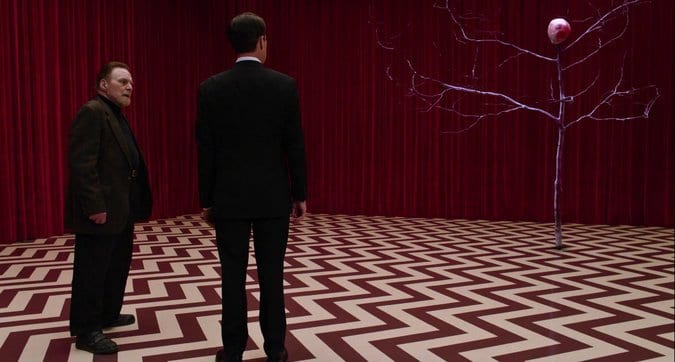
The Black Lodge doesn’t want to die, but between supply going down and consumption going up, that’s exactly what’s happening to the Black Lodge. In all honesty, I think it’s reverting to the norm after a period of immense growth brought on by the Frog-bug expansion of 1945, but the Lodge doesn’t see it that way because its own survival is at stake.
As a byproduct of BOB’s escape, the Lodge has a new house guest, and one who happens to have an immense desire to be helpful. The Lodge wants to capitalize on this in a big way. This is why Phillip Gerard is so intent on springing Cooper from the Lodge regardless of the legally binding deal BOB made with the mortal. Gerard’s entire survival is at stake and he’ll do whatever it takes to get Cooper ready to help them.
Based on the denizens’ interactions with BOB in Fire Walk With Me it seems that BOB made the 25-year-long deal with Cooper on the sly, and the denizens are more than interested in helping. They get Cooper out through a loophole. Because Cooper knows everything DoppelCooper does. They lean hard into the Find Judy plot to distract the DoppelCooper that gets just as white knight-like as Cooper does. They invent an “unofficial version” of Dale Cooper’s quest to find Judy so DoppelCooper can remember that instead of the real thing happening.
DoppelCooper, who also wants to extend his life beyond 25 years, puts traps all over to capture or kill Cooper. This part is the most straightforward: the glass box can capture Cooper and DoppleCooper can exile him to nonexistence from there. The electrical outlet is covered by a woman whose appetite for drugs has put her into a state where her only alarm call is “119” if any activity is detected. Hitmen are employed by Mr. Todd and Lorraine, and come in all shapes and sizes like Ike the Spike or Chantal and Hutch. DoppelCooper has all exits covered so that Dale will stay out of his way. Except there’s Judy to protect now. Framed the way it is, where even Gordon Cole has this on his priority list, DoppelCooper needs to make sure his “lady” is also under protection. And just as Cooper is blind in love (let’s look at Caroline and Annie’s fates for examples), DoppelCooper is similarly blinded with this Lodge-veiled reality. And in a way we get a new angle on “protect the queen.”
The Black Lodge tasks Phillip Gerard with getting Cooper through his doppelganger’s gamut. Gerard subliminally convinces Tracy (who works at the Lodge-connected coffee chain) to keep Sam occupied while Cooper slips through, and disposes of the teens with a model of the personified Lodge’s Experiment that will convince DoppelCooper of the Judy ruse.
Switching out Dougie with Dale was the next step and that went smoothly because the hitmen in cars were inept, and Jade was a good soul and therefore blessed with White Lodge style luck that got Dale out of there. Not to mention the fumbled keys.
Owls watched the Jones house at all times: we see one fly over the house in its first scene and there are always people commenting about birds, or shadows on the ground, even in the quick comedic scene where Sonny Jim and CooperDougie play “catch”.
Gerard gives a pie to CooperDougie as a trigger to go along with the dream he gave to Bradley Mitchum. Then there’s Gerard literally telling Cooper to wake up, and don’t die.
So the Black Lodge wants to bring BOB back into the fold as their garmonbozia gatherer. They also want the Laura Palmer problem fixed as if it were never there.

The Black Lodge denizens know Phillip Jeffries is unhinged from time. They make sure Dale Cooper is in a position to use Jeffries’ ability and take the Owl Cave symbol-embossed ring of time to travel backward through it as only a physical-reality-based human can do. They task Cooper to effect time so that Laura Palmer does not break the circle of appetite and satisfaction and make it go u-shaped, hemorrhaging garmonbozia over everything until the Lodge bleeds out. And because Cooper is an optimist who instinctively sees the good in people, he goes along with that plan. Partially, I suspect, because the Fireman compelled him to do so, but also because BOB is just one denizen. The other ones have been fair to Cooper. They even let him astral project to meet the Fireman. And who knows, maybe even the Lodge denizens have hearts of gold like the Mitchums and Cooper brings it out of them too. These denizens are beings that also have a right to exist.
Also, let’s not forget: Cooper has a horse in this race. The same agent that wanted to be the one to crack the Lindbergh case is the same agent who never satisfactorily solved the Laura Palmer case. And when given a chance to fix this, his worldly hubris says yes please.
As DoppelCooper willingly takes on Judy’s protection, our Cooper willingly takes this challenge on. He will save Laura Palmer.
And he’ll do it using time travel as Garland Briggs (the WWI pilot outfit in Season 2) and Phillip Jeffries (Buenos Ares and the missing years) before him.
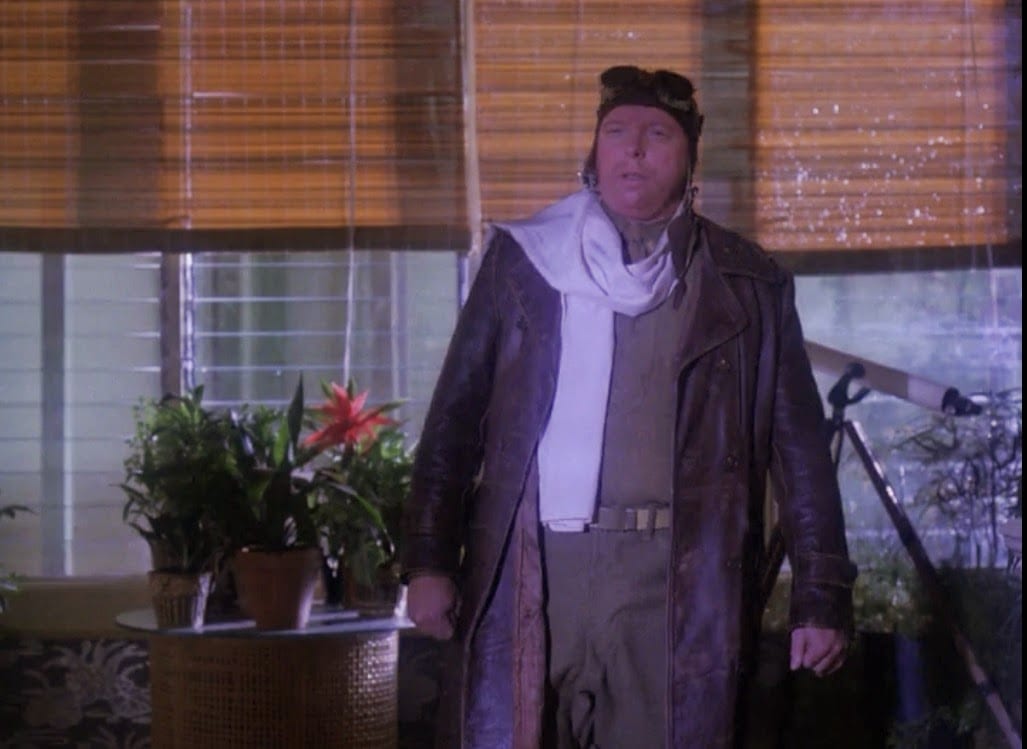
Thanks to the repeating scenes of Lodge Laura’s whisperings, I suspect that Cooper’s been through this life already at least once before, and he’s in a “New Game +” version of events so he’s got a leg up on folks as he gets even closer to ending his connection to BOB.
Cooper’s been doing this long enough, arranging himself a few steps further ahead each new time loop, that I suspect his own version of Lodge-related shocks to time all by himself look like rain drops on a sidewalk, and makes time just as slippery. Because he goes through time in the Owl Cave symbol, he’s on a different frequency than physical reality though because of the reality overlap it affects physical reality anyway. And we don’t see multiple timelines, we just see one, littered with Cooper iterations constantly redefining people’s memories as he cycles through.
Billy may be an in-story explanation of these constant changes: if you can keep track of when Billy does different things with the different Roadhouse characters, or how he may or may not be with Audrey after Part 12 you can see the ripples to the Lodge-adjacent memory of the town. He may be less a red herring and more a barometer of change, or at least a mile marker for us to instinctively understand how time ripples tend to go.
Our timeline, the one the audience sees, is a single string that is being regularly collided with and rewritten. Memory does what it does to people within the timeline but when you pull back far enough away, it’s a line that that has a lot of texture changes in the middle where it’s being hit by the proverbial rainstorm of Coopers.
It’s quite possible, with all these interactions, that Cooper is the one who’s charged the earthquake-sized shockwaves that erupt like a bomb when Laura Palmer defeats BOB, thus setting up the Black Lodge for its implosion.
Which would be a very Fireman thing to arrange.
The Fireman believes in balance

Sometimes a crop field needs a controlled fire to raze the land and make it fertile again. It’s possible the Black Lodge goes through ebbs and floes in that way. You know, going back to starting positions.
It’s also possible, if you look at the Evolution of the Arm as an indicator, that it’s a step the Black Lodge needs to go through in order to properly evolve to a new form. Make them die to fix their hearts, so to speak.
Evolution is a state the Fireman fosters in everyone because he believes in balance above all else. Balance leads to evolution.
A major indicator of balance in Season 3 is the color purple. The Fireman’s domain is bathed in a purple sea. Jacoby notes in The Secret History of Twin Peaks that his glasses are meant to balance the two hemispheres of the brain and I believe it’s also supposed to balance the two levels of reality that are causing so much trouble to each other. The colors of Jacoby’s lenses give the wearer a purplish hue to how they see the world. And every chance we see purple in Season 3, it appears on a point of balance. The Polish Accountant who kills Hutch and Chantal has on a purple shirt. Gersten Hayward is wearing purple when she realizes how bad a situation she was in (which says to me she’s acknowledged her genuine reality and can begin healing). Naido herself is dressed in purple and seems to focus Cooper on the task at hand.
And in between Parts of Season 3, we go back to the Roadhouse to achieve a certain balance as viewers. We are supposed to go back to our center, back to starting positions, as we continue to experience the images Lynch puts before us.
Audrey’s own evolution into acknowledging her actual physical situation happens when she’s bathed in purple at the Roadhouse. She finds balance inside herself, acts more like herself than she had in years, and acknowledges the place where she appeared to be is not her physical location. She wakes where she is physically real. She can begin to heal, she begins to evolve.
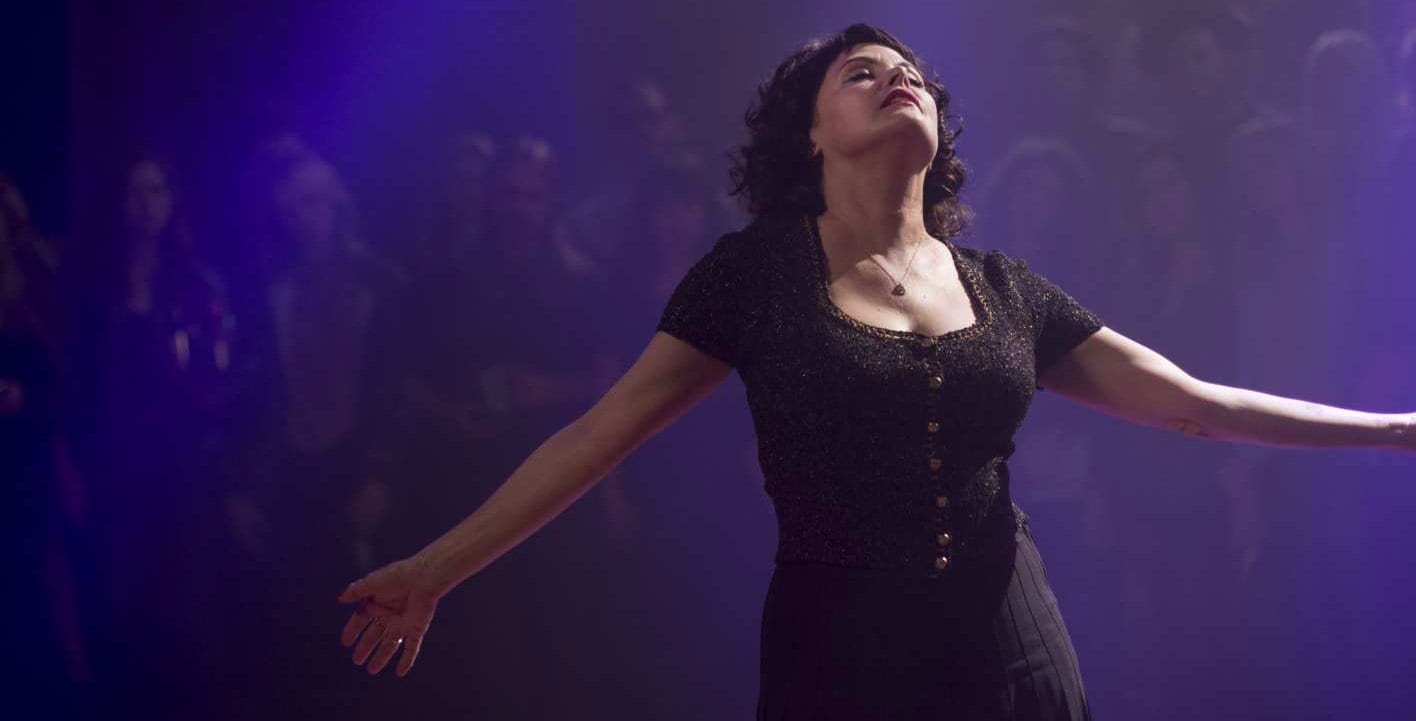
Outside the musical interludes where our brains are allowed to relax, very few things in Season 3 are balanced. The stuttering time found around portals is unstable and therefore proves an imbalance all by itself. So does the physical world’s appetite problem.
But balance is being achieved, person by person. The Mitchums lose their violent tendencies as they get close to CooperDougie, and they help him get to Twin Peaks. Ben Horne feels the hum and he stops throwing only money at problems, even begins to invest himself in the possibility of growing love with Beverly, while also helping to rescue his brother. Freddy wants to help people and the Fireman enlists him in the quest to knock BOB down for the count. Harriet Hayward and even Donna, per The Final Dossier, find a peace within themselves (albeit on different schedules) and go into the medical profession. Nadine heals herself and finds love prospects with Jacoby while also allowing Ed to heal himself, and Norma heals herself by making her own balance more important than the growth of her business with Walter, thus leaving room for her to find love with the newly healing Ed. Margaret Coulson and Carl Rodd were abducted as children, most likely by the White Lodge denizens, and have evolved into healers as well. Carl helps his tenant not sell his blood, and he brings a mother to accept the situation that her child was killed so that she can begin her healing process. Margaret uses her words to help people find truth within the world and themselves, and once that happens balance begins to be achieved.

Jacoby himself may be doing the Fireman’s work as well: he met giants on a shamanic vision quest, documented in an excerpt from his book in Secret History. He writes about how uncomfortable the tall ones made him feel, that they were cold, reptilian. He had not found balance then (it took the death of Laura Palmer for him to properly begin to shovel himself out of his sh*t, another proof Laura’s death needs to return to the collective consciousness) but I suspect his meeting laid the groundwork for the work he was supposed to do, which I am well on record supporting as one of the most important messages in the show: spreading the message of balance and accepting your reality in order to heal en masse. He’s even working with the Fireman’s alchemical imagery, though it had to be shovels rather than an orb for this worldly agent.
Regardless of which character you look at, the pattern is the same: Once balanced, the instinct is to heal and to grow. Some may call this a way of evolving.
And we can’t talk about evolving without mentioning Major Briggs. The details of Briggs’ role is murky at best as we have no POV from the man himself, but what we do know is he puts in place a number of things that in the end lead the good guys of the sheriff’s department to Jack Rabbit’s Palace. His note directs them to grab a handful of dirt before they get there, which to me is another proof that they were crossing from one reality level to another and they needed a mooring to remember how to come back to Earth.
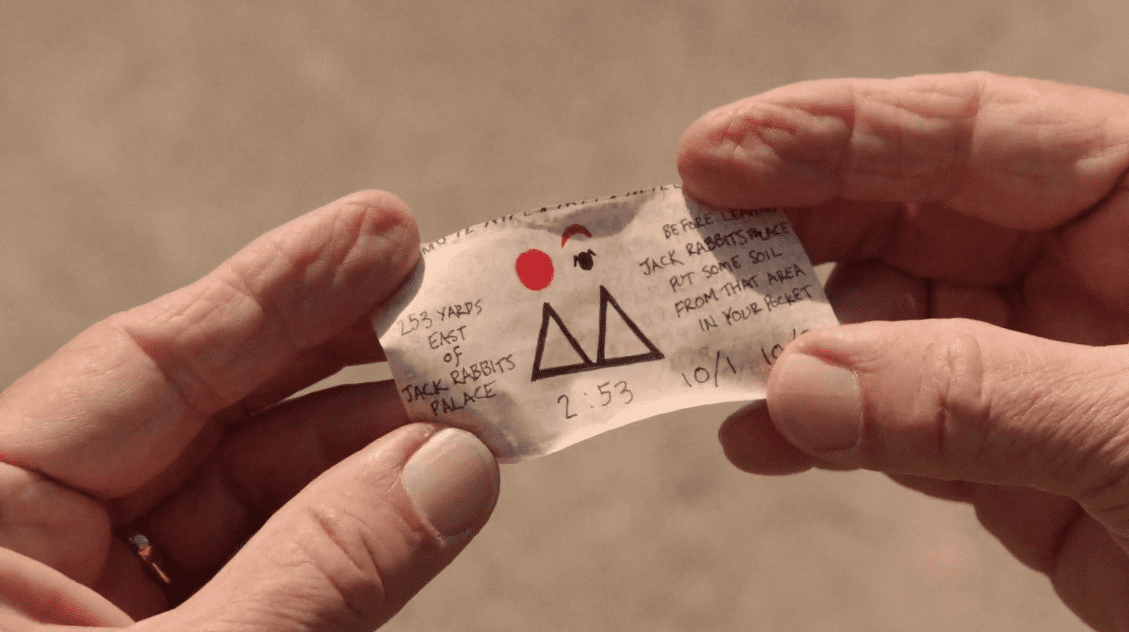
Why go through all that? So that Andy Brennan, a good man and a helper by nature, can get a vision that will give him the information when needed to help end the earthly tenure of both DoppelCooper and BOB. Briggs knew this would happen most likely because he was working with the Fireman, who plays long game better than anyone. I suspect Briggs also knew that eventually his physical body would be killed along with Ruth Davenport in “the Zone” but I suspect Briggs was completely Obi Wan about it by then because Bill Hastings said his death was beautiful as Briggs’ head separated from his body. Briggs’ head then passed by the purple sea where Cooper saw him (and Briggs may or may not have triggered something in Cooper’s memory by saying “blue rose”), and then took up residence as a Wizard Of Oz-style floating head in the White Lodge as a Lodge entity and peer of the Fireman.
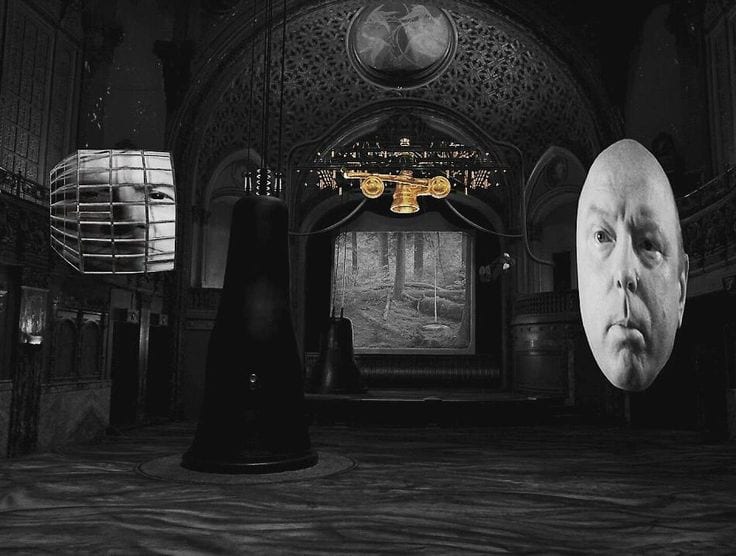
Let me put it plainly: Briggs was once a man but he has evolved.
Extrapolating that we are humans just like Garland Briggs began, this means we are like toddlers to the Fireman, and we can grow into an ascended being if we just achieve repeated moments of balance and evolve stage by stage. Some may even say alchemical stage by alchemical stage.
The White Lodge denizens, based on Major Briggs’s head, leads me to believe there are evolutions we can grow into. The Buddhist reincarnation Lynch tends to be fond of also believes in this form of evolution over time and that makes me think this is an intentional connection to make.
The Fireman looks to Dale Cooper as the kind of person who can become a magician and can evolve like Major Briggs, but also knows Cooper’s unable to see the bigger picture outside Cooper’s experience up to now. Cooper, as much as he screwed up the timestream with the Laura removal in Part 17, is comparatively just a child, momentarily lost in understandable shortsightedness and hubris. And with experience he’ll learn.
Dale Cooper and the Fireman’s Plan

When Cooper agreed to help the Black Lodge, he appeared to be mired in worldly concerns as well as sympathetic to a whole race of denizens who don’t deserve to die. He wanted to help the Lodge with their troubles, but he was being purposefully short-sighted. In the first scene of Season 3, he is being primed as a sleeper agent of the White Lodge, not to be triggered until he hears the sounds of Laura being taken from Cooper in the forest of the Part 17 Fire Walk With Me flashback/rewrite. This means the Fireman knew Cooper needed to steal Laura from the timestream by way of Lodge reality. The Fireman knows there’s a reason for this to happen, even if it’s just to give Cooper a choice to make.
The Fireman allowed Cooper to take Laura because he also knew that Lodge-influenced memories in the physical reality was no more indelible than faerie glamour. This can be undone, and I’ll explain how in a bit, but for now the Fireman knew Cooper needed to learn his lesson firsthand or he was never going to learn it.

The Fireman has the patience of a parent with Cooper. He saw what the Black Lodge and Cooper’s plan did to reality, but he didn’t get angry with Cooper. He saw kids wanting what they want immediately when they want it. He saw it like the kids broke something while they were playing. While they were learning how to use their bodies better. In this case, how to use their souls better.
The Fireman used his talk with Cooper in Part 1 like an episode of Daniel Tiger for adults: don’t mess with the timestream, you may break something. And when you do, own up to it, move forward, and fix it. He doesn’t tell Cooper judgmentally because Cooper just doesn’t know. It’s not Cooper’s fault he’s ignorant of so many things, he can only learn so many things at so fast a pace. The Fireman can tell Cooper every reason under the sun why he shouldn’t do something but it’s not Cooper’s fault he doesn’t listen to everything because he doesn’t even know how to listen yet. He’ll get there, with time and patience. We can all see how Cooper will be when he’s all grown up into a mature Lodge spirit. All his assertive leadership will make him a good Fireman one day. The Fireman gives Cooper the information that will help him succeed, then puts Cooper back in the timestream, hoping this time when Cooper hears the sound he makes the choice to listen.
The Fireman’s plan has three parts, as far as I can decipher when it comes to fixing the imbalance in Season 3:
A) rid Cooper of BOB
B) send the Golden Laura Orb into the world
And C) push the Lodge back into its proper proportion
All three of these goals will put any number of characters back to starting positions or present in their lives, and therefore able to look through their darkness and move into the future. This includes Cooper, Diane, and even Laura Palmer.
The BOB Problem

Margaret contacts Hawk, which leads to uncovering Laura’s prom photo. The path to Betty Briggs, the message in the chair, and Bobby’s interpretation led the way to Jack Rabbit’s Palace and Andy getting his vision. It allowed Naido to be in the proper place to unlock Diane once her tulpa accepted its trauma and alchemically changed, and Andy also readied Lucy to begin the process of removing BOB from DoppelCooper.
From another direction, Freddie received his marching orders from the Fireman and was directed to being in the right place when he stuck up for his dumb friend James (and helped him from getting the crap beat out of him) when James couldn’t help being too nice to a woman who happened to be married to someone else.
And the Mitchums were called to courier in Dale Cooper, so that after the BOB problem was literally punched away from the world he could unlock Diane somehow from her safehouse inside (that uncomfortable moment of whitewashing known as) Naido.
Once this happens, we have still-in-cooperation-with-the-Black-Lodge Dale Cooper doing his thing by removing Laura Palmer from the Lodge-adjacent level of the timestream, but then he begins a time loop again. And this time when he leaves the Lodge, Diane (for the purposes of this argument I’m assuming she’s the real Diane rather than an entity calling herself Diane, neither option being provable), who was freed from Dale’s last time loop, is waiting for him.
And they may be predominantly in the physical world when they meet but they drive 430 miles away and reenter Lodge-space where Dale (who I still believe is confronting his shadow self by living as his shadow self) assists Diane through the moment of Diane’s final trauma: the night DoppelCooper raped and presumably killed her.
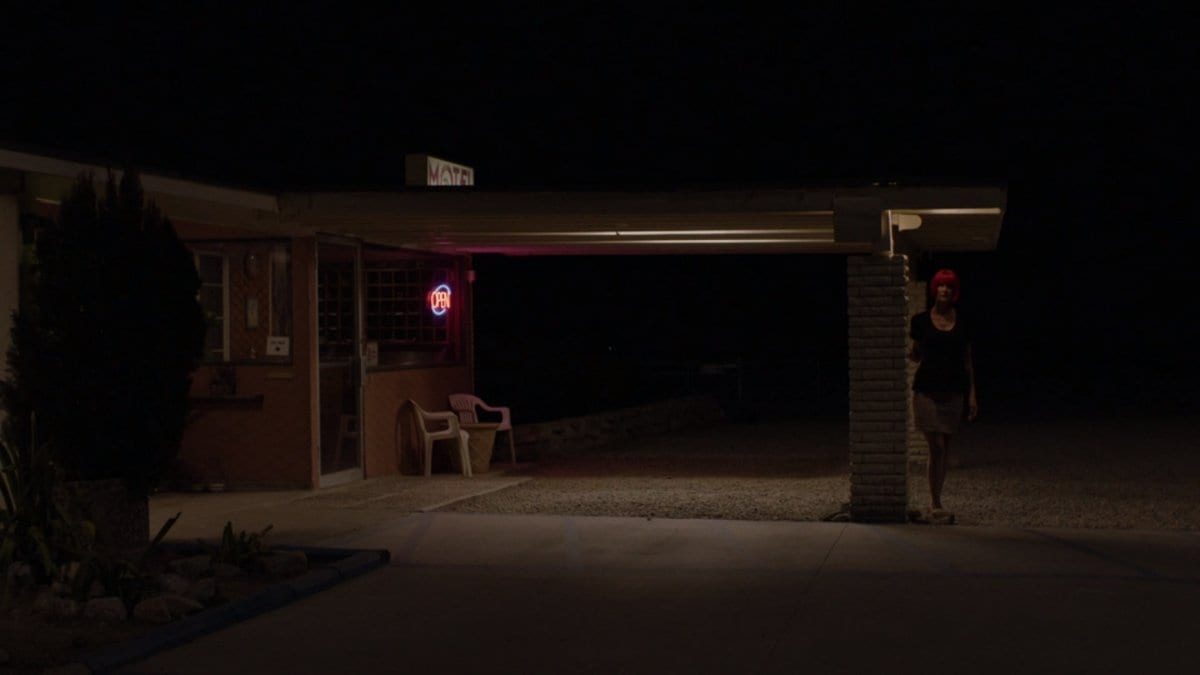
Just as Dale—in Episode 29—saw himself and Caroline stabbed on the floor of the waiting room, Diane sees herself outside the hotel where “Dale” took her before revealing his BOB side. Then Diane, who seems to be steeling herself for what she knows will happen, confronts this scene from her life head-on. And just like how Annie and Caroline switched back and forth in Dale’s scene, Dale and DoppelCooper seamlessly and continuously switch back and forth for Diane’s. And by the end, Diane appears to have looked through this darkness and moved on from it as she’s never seen again.
Did Dale confront his shadow finally in these Part 18 scenes? Or is there still work to be done there? It’s hard to say. He ushered Diane through her trauma, ushered Carrie through hers later on like a Bodhisattva (I’ll get to that), but Season 3 leaves him at the same point Jeffries was in at the end of his Fire Walk With Me scene. It’s hard to know if Dale will go the way of Jeffries or of Briggs, but I do know he has potential for either and the choice is his to make because the Fireman can only give people the chance to make a choice.
Like he did for the whole world when he made the Golden Laura Orb.
Brings back some memories
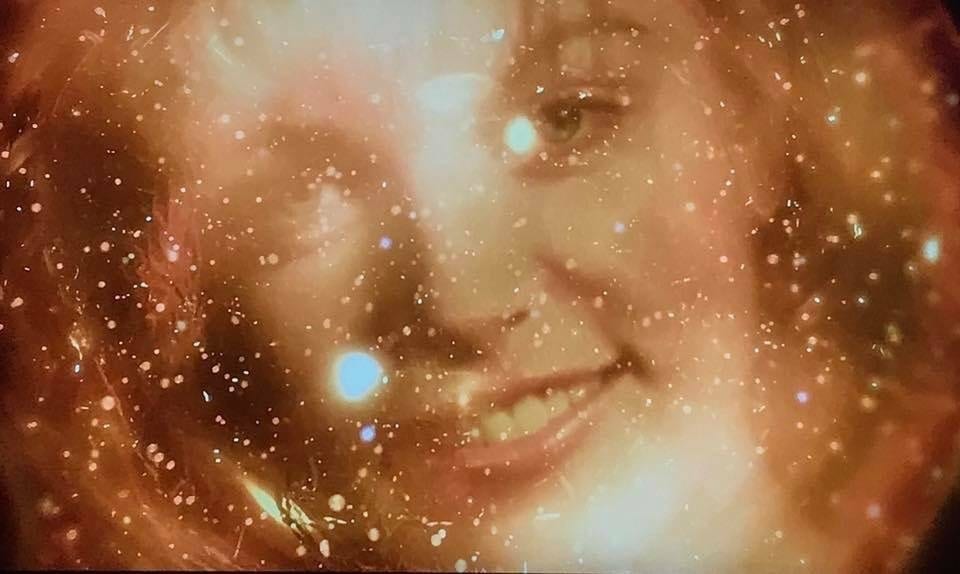
The Fireman made the Golden Laura Orb in response to seeing BOB. The BOB orb that we saw had a constantly moving Frank Silva inside it. The Golden Laura Orb had a still image inside it. I made a case here that this difference means something huge, but it’s not about counteracting a frog-bug in Sarah Palmer or just being a portal into the White Lodge. The real reason why I think this image is used is because it’s supposed to remind the physical Twin Peaks world of what the true fate of Laura Palmer was.
If the world can remember that Laura Palmer died, the belief of people living in a nested dual-reality will be able to push away this false Lodge-adjacent reality where Cooper saves Laura from death. Belief in the true story will take shape as truth in the Lodge reality as well, thus reasserting the reality where the Black Lodge spins out of control and needs to die and evolve.
The homecoming photo has always meant “remember Laura’s story.” It was at the end of almost every Twin Peaks episode in Seasons 1 and 2. Even when we were hip deep in Evelyn Marsh and Little Nicky (I know, bad image) it always ended with that photo telling us, even when Laura doesn’t seem to have anything to do with things, that she (and the trauma her photo represents) is always going to be here looming behind everything.

Does the homecoming photo serve the same purpose in Season 3? It’s the first image of every episode except the first one so you tell me.
The opening moments of Season 3 is reused footage between Dale and Laura from Episode 29, where she says I’ll see you in 25 years. We are reminded of this.
There’s a hard fade followed by fog, recalling the opening moments of the Pilot. We are shown the mill for the only time, to make us remember how it was before. We are shown the high school’s hallway, then a slow-motion version of the scene where the nameless girl runs screaming through the courtyard. Her scream is expressed trauma, and she is reacting to the death of Laura Palmer. This is what we’ve been asked to think about when we are shown the trophy case with that homecoming photo in it. This is what we’re still thinking about when we get a close-up of the homecoming photo, and when the title font words “Twin Peaks” are displayed on screen.
We are methodically reminded of Laura Palmer’s specific tragic story.
And that’s exactly what I think that image in the golden orb is supposed to do to the residents of Twin Peaks as well. The Fireman sends the golden orb into the world as a living memory that can reassert physical reality’s truth over things. It’s a golden shovel for the world to see through the delusion. It is the exact reverse of a tulpa: a creation in Lodge-space with physical shape that is meant to recreate memories inside people’s minds.
Memory is under fire everywhere in the physical world. The Lodge-assisted arrival of Ruth Davenport’s head and Major Briggs’ body in her apartment makes Ruth’s neighbor Marjorie such a mess that she can’t help the police do simple things like let them inside, and Hank the janitor thinks the police are after him as if he can’t get out of his own fear’s way. And this is only one small moment from well outside Twin Peaks proper. The Lodge messes with people everywhere.
Cooper’s removal of Laura Palmer from the Lodge-affected timestream similarly veils the physical world (up to and including the town’s microfiche) and it needs to be undone by the reintroduction of the physical memory through the golden orb.
The photo begins its work as Margaret suggests Hawk reopen the investigation. Hawk understands first it was a murder. Frank Truman also understands this to be true because he’s newly returned to Twin Peaks and hasn’t been charmed by the proverbial faerie dust on this issue. And the photo, when it’s sitting on the table, begins its work in earnest with Bobby Briggs, who says it all: “Brings back some memories.”
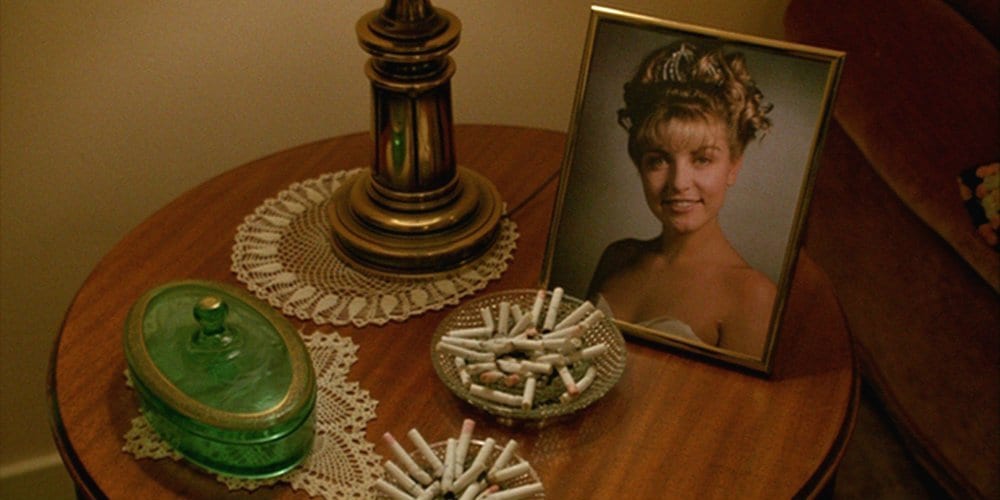
Audrey, mentioning the little girl who lived down the lane, seems to be inciting a ghost story against Charlie when he says he’ll end her story too (does he really mean in a Lodge-adjacent cover-up of actual events like what Cooper achieved?), and she eventually pushes the Lodge side of her world (that went away along with the false Laura ending) away from her life, eventually ending up in what looks like may be her hair salon (long story if you haven’t read Final Dossier). It’s as if, even though she can’t see the homecoming photo, she feels it, and the little girl who lived down the lane is the verbal-only explanation of the homecoming photo.
Even the Evolution of the Arm, the only known evolved member of the Black Lodge, seems to know what’s really going on, and is possibly beginning to accept the fate of its home. The Evolution of the Arm too incites the little girl who lives down the lane, as if the tragic story of Laura Palmer is reasserting itself into even the Lodge’s reality. It’s unraveled the Black Lodge’s plan that quickly.
The more often the physical memory of Laura’s death asserts itself over the Lodge-adjacent memories, the more barriers go up between the realities. The more balance is achieved.
But to seal the deal, Laura’s trauma needs to understand what happened to her so her circle can be complete.
Carrie Page and Laura Palmer
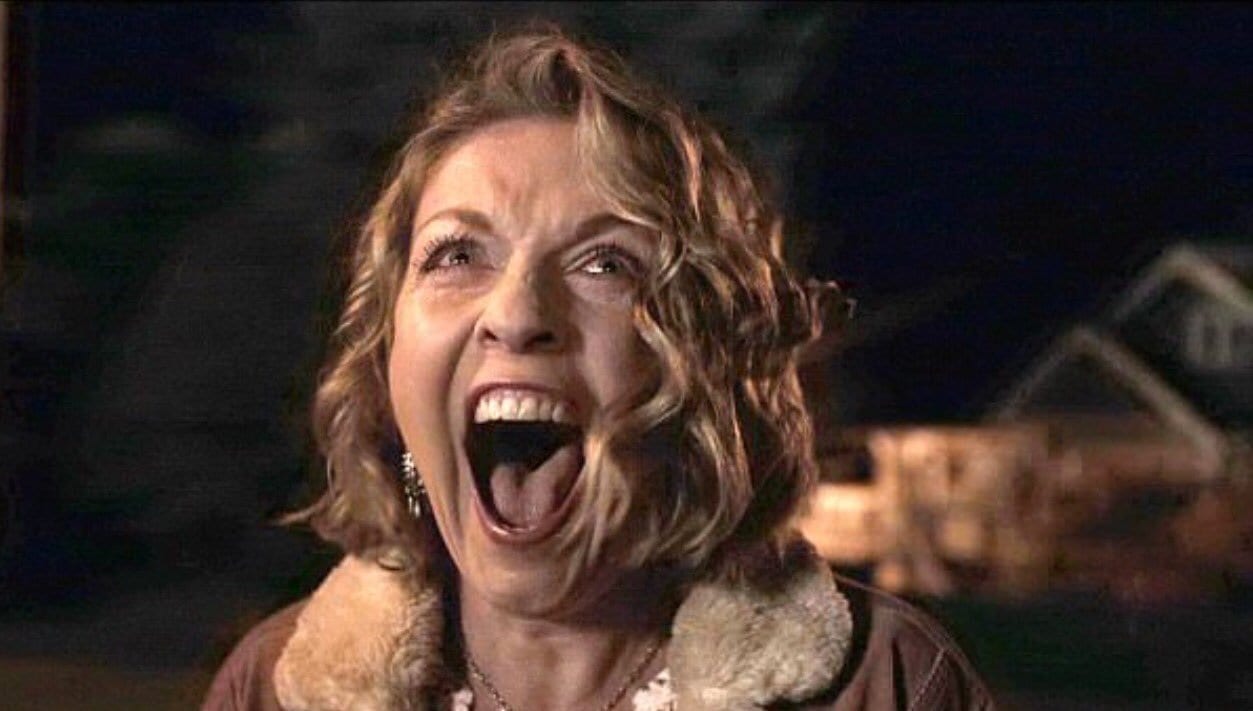
In the Fire Walk With Me flashback, the sounds the Fireman wanted Cooper to listen to (his trigger to become a White Lodge agent in earnest) was likely the sound of an angel coming to get her. And the scream is identical to the one Carrie Page screams when being removed from the Lodge in Part 2.
There are two possibilities here:
- Carrie was created specifically inside this Flashback. “Your Laura disappeared,” she tells James. “It’s just me.” This could be Laura’s trauma created here, then removed by Cooper. Possibly she’d grow into the Carrie Cooper meets in Parts 1 and 2.
- This version of Laura was taken by an angel just like Laura was at the end of Fire Walk With Me in an inverted version of that same ending as seen outside the Waiting Room but still inside the Lodge. And still next to Cooper when it happens.
Though I think this is a false memory, the Fireman still sends an angel to take this Laura away. And yes, I now think the Fire Walk With Me angel is an agent of the Fireman. She was in the Dutchman picture in Laura’s room. That picture was given to Laura by the Chalfonts, who appear to be allied with the White Lodge more strongly than the Black Lodge. Possibly that picture was a choice for Laura: an escape route, or an avenue for her angel protector to find her.
I’d say there was just one angel, except there absolutely were two in Andy’s Fireman vision. One on either side of Laura. I’m most comfortable thinking these angels both saved Laura, once in the real version, and once in Cooper’s unofficial version.

And where did these angels bring her? To keep her safe in the White Lodge safehouse room while she stayed inside American Girl just like her similarly-fated roommate Diane stayed in Naido (I’ve dug into this concept here for more specifics). Laura, while incomplete because upon her death her trauma separated from her before she could accept it, needs her tulpa to accept its fate just like Diane’s did. Once the tulpa turns into a gold lump of metal then Laura’s soul will be free to come out, become herself, and go on her Lodge trial just as Diane did in Part 18.
But Cooper needed to fetch Laura’s tulpa first because Carrie cannot remember this past as Laura. She has not had the trigger to remember quite yet. She has not come across her “:-) ALL” or her “listen to the sounds.” So Cooper’s going to bring her to where her trigger is: The Palmer House.
And let me remind you, I’m suggesting this is an in-Lodge mission that is simultaneously in our physical world. There is no Judy. Judy is just a red herring. Carrie is not a bomb. This is something much more organic happening. This is alchemy on a personal scale.
When Cooper and Carrie get to the Palmer House, it’s very possible that in this Lodge loop Norma had decided to never franchise, hence no “RR 2 Go” painted on the diner. It’s also possible Sarah really did die and her haunting presence no longer resides in the Palmer house. But I’m beginning to think that, much as Briggs appeared to have skipped like a stone forward over time (having barely aged since his purported death in 1989), Cooper was also skipping over time in this new Lodge loop. Diane’s confronting of her trauma in the hotel room may have been a catalyst to put Cooper into a hibernation and this could be the equivalent of a hit of fingerprints on Cooper’s own journey ahead in time. He may not know that he’s skipping, just like how Jeffries didn’t know what was happening the first time he lost two years. Cooper may be so far ahead in time here that the town of Twin Peaks has no recognizable residents left. It’s possible that’s how long it took for the town to heal enough for the trauma-brought-to-life Carrie Page to come in and put the finishing touch on things.
What was the trigger Carrie needed to finally acknowledge things? Diane’s tulpa had “:-) ALL” to be able to acknowledge “he raped me”. Carrie needed Laura’s childhood house. Specifically, she needed it to be a haunted house. She needed the walls of that house to remember the moment of Sarah’s grief when she realized her daughter was missing and probably dead. Carrie needed the house to replay her mother calling out her name, something we’ve seen that house do so many times. Carrie needed that house to do its haunted house thing so that she could acknowledge “my father killed me” and now Carrie the tulpa can go back to the Lodge and turn into a little gold metal ball so that the real Laura’s soul “can go out now” from that room in the White Lodge, hatch out of American Girl, and do the hardest thing she could do by witnessing her trauma from the inside one more time with hindsight. And once she does that, she’ll be able to “go out now” and ascend like Major Briggs. And like Cooper will, once he goes through at least one more time loop after the longest whispered message yet from Carrie, or possibly some other new aspect of Laura Palmer.
Or maybe this time it really is Laura Palmer instead of someone who just feels like they know her.
